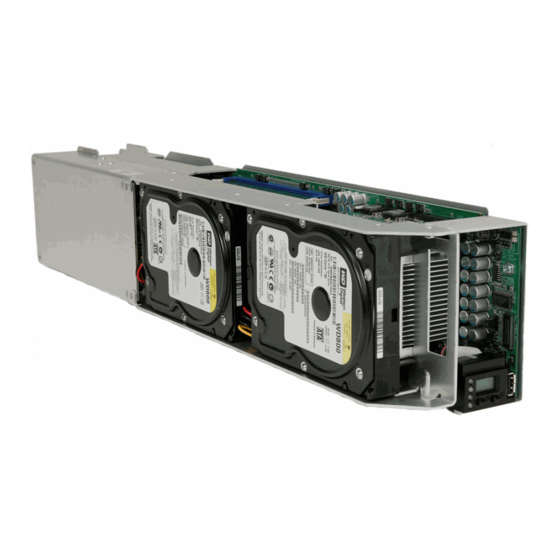ClearCube R4300 Handleiding locatievoorbereiding - Pagina 8
Blader online of download pdf Handleiding locatievoorbereiding voor {categorie_naam} ClearCube R4300. ClearCube R4300 9 pagina's. Version 53b12
Ook voor ClearCube R4300: Snelstarthandleiding (2 pagina's), Release Release (1 pagina's), Snelstarthandleiding (2 pagina's), Snelstarthandleiding (2 pagina's), Snelstarthandleiding (2 pagina's), Handleiding voor firmware-update (3 pagina's)

NOTE: the ClearCube Architecture uses all four copper wire pairs for the cable connection
between the PC blade and each C/Port. If your installation currently splits out wire pairs for
multiple uses, you will need to ensure that a separate, full Category 5 connection is available for
each PC blade to C/Port connection. Fiber optic installations require two 62.5 micron, multi-mode
fibers connected in a straight-through manner.
NETWORK CONSIDERATIONS FOR I/PORT ENVIRONMENTS
Customers deploying I/Ports need to ensure their Ethernet infrastructure can support the added
network demands imposed by these products. Each I/Port requires a dedicated network switch
port for connectivity. This is in addition to the network switch port required for each blade. I/Ports
also require sufficient network bandwidth for adequate performance. Depending upon the user's
applications this can range from 50 kbps for text-based applications to 1 Mbps for graphically
intensive programs. The chart below can help you determine necessary bandwidth that will be
required by the users in your organization.
Application
Environment
Basic, text-based
Typical Office
Graphically intensive
Note: Every network environment is unique, so these bandwidth amounts should be used as a
guideline, not absolute measures. Certain network conditions may dictate higher bandwidth
requirements than those listed above.
SOFTWARE PREPARATION AND IT PERSONNEL REQUIREMENTS
The ClearCube Management Suite (CMS) is enterprise software that enables customers to
realize the full potential of ClearCube's centralized PC blade architecture. The components of
CMS require various TCP and UDP ports to be open for reliable communication. Please call
ClearCube Technical Support or visit support.clearcube.com to obtain the most current list of
network ports used by CMS. These ports cannot be blocked by firewalls or access lists when
customers are deploying CMS. In some customer environments, this may require assistance
from a group other than the team deploying ClearCube hardware and CMS. Arrangements
should be made with the required personnel to complete this work before deploying the
ClearCube software. ClearCube Professional Services can assist in customizing the software
installation process to help meet customer security requirements and resolve other issues.
The ClearCube Management Suite components rely on Java, Perl and Apache Tomcat
technologies as prerequisites. Some customer environments include other applications that rely
on Java or Tomcat. Administrators should ensure that CMS prerequisite requirement versions do
not conflict with prerequisite versions for other applications in the environment.
In addition to management software, each managed group of ClearCube chassis must have one
chassis with a Remote Management Module (RMM) connected to the network. The RMM is a
controller that links a chassis systems management bus to the ClearCube management software
via Ethernet. The RMM enables switching functions, logging of chassis events, and permits
remote control of an entire rack of chassis, allowing any administrator with Internet access to
manage the client blades and chassis remotely. Depending on the RMM version, some will
Example Applications
Email, notepad
Word, Excel, basic web browsing
Flash animation, PowerPoint
Table 3: I/Port Bandwidth Guidelines
8
Typical Sustained Bandwidth
Required While a User is Active
15 Kbits/sec
35 Kbits/sec
70 Kbits/sec
